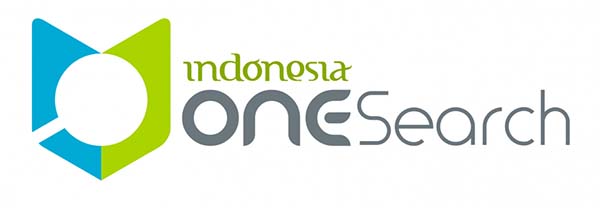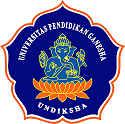Discrepancy Analysis of the Implementation of Authentic Assessment in EFL Classroom of SMA N 2 Tabanan Gerokgak District Tabanan Regency Based on Curriculum 2013.
Abstract
Penelitian ini bertujuan untuk menganalisis diskrepansi antara pelaksanaan penilaian otentik yang ideal berdasarkan Permendikbud No 81A tahun 2013 dan implementasi nyata di kelas EFL SMA N 2 Tabanan. Rumusan masalah menjadi pedoman penelitian. Pertama adalah diskrepansi pada pelaksanaan penilaian otentik di kelas EFL SMA N 2 Tabanan. Kedua adalah keyakinan guru pada pelaksanaan penilaian otentik berdasarkan kurikulum 2013. Penelitian ini dilakukan dengan menggunakan Discrepancy Evaluation Model oleh Provus (1971). Langkah-langkahnya terdiri dari (1) tahap definisi, (2) tahap instalasi, (3) tahap proses, (4) tahap produk, dan (5) tahap banding. Instrumen yang digunakan adalah lembar observasi kelas, administrasi kuisioner, dan wawancara dengan para guru. Tahapan pada penilaian otentik berdasarkan Permendikbud No. 81A adalah perencanaan, pelaksanaan, dan penilaian dan pelaporan. Penelitian ini ditemukan bahwa pelaksanaan penilaian otentik secara keseluruhan, dikskrepansinya adalah 36.15%. secara detail, diskrepansi pada penilaian performa adalah 31.17%, penilaian proyek adalah 36.93%, penilaian diri adalah 56.50%, dan penilaian portofolio adalah 20%. Selain itu, hasil dari kuisioner menunjukkan bahwa guru EFL memiliki keyakinan positif dalam pelaksanaan penilaian otentik. Mengacu pada temuan, ada dua isu penting yang muncul dari temuan. Pertama, guru memiliki keyakinan positif dalam pelaksanaan penilaian autentik; Namun, para guru masih memiliki kesalahpahaman pengetahuan untuk melaksanakan penilaian dengan baik. Kedua, waktu pelaksanaan tidak cukup untuk melakukan beberapa jenis penilaian otentik dalam kelas yang besar dan beban kerja yang berat.
Kata Kunci : asesmen otentik, kurikulum 2013, diskrepansi
This study aimed at analyzing the discrepancy between the ideal authentic assessment standard according to Permendikbud No 81A Year 2013 and the real implementation in EFL class in SMAN 2 Tabanan. The research questions become guideline of the research. First is the discrepancy of the implementation of authentic assessment in EFL classroom in SMA N 2 Tabanan. Second is the teachers’ belief of authentic assessment implementation based on curriculum 2013. The research conducted using Discrepancy Evaluation Model by Provus (1971). The steps consist of (1), Definition Stages, (2) Installation Stages, (3) Process Stages, (4) Product Stages, and (5) Compare Stages. The instruments used are classroom observation sheet, questionnaire administration, and interview with the teachers. The stages of authentic assessment based on Permendikbud No.81A are planning, executing, and analyzing and reporting. The research found that overall implementation of authentic assessment, the discrepancy was 36.15%. In detail, the discrepancy of performance assessment was 31.17%, project assessment was 36.93%, self-assessment was 56.50%, and portfolios assessment was 20%. In addition, the result of questionnaire shows that the EFL teachers have positive beliefs in authentic assessment implementation. Referring to the findings, there are two key issues which emerged from the finding. First, teachers had positive beliefs in authentic assessment implementation; however, the teachers still had misconception knowledge to implement the assessment well. Second, the time was not enough for conducting some types of authentic assessment in a big classes and heavy workloads.
keyword : Authentic Assessment, Curriculum 2013, Discrepancy
Kata Kunci : asesmen otentik, kurikulum 2013, diskrepansi
This study aimed at analyzing the discrepancy between the ideal authentic assessment standard according to Permendikbud No 81A Year 2013 and the real implementation in EFL class in SMAN 2 Tabanan. The research questions become guideline of the research. First is the discrepancy of the implementation of authentic assessment in EFL classroom in SMA N 2 Tabanan. Second is the teachers’ belief of authentic assessment implementation based on curriculum 2013. The research conducted using Discrepancy Evaluation Model by Provus (1971). The steps consist of (1), Definition Stages, (2) Installation Stages, (3) Process Stages, (4) Product Stages, and (5) Compare Stages. The instruments used are classroom observation sheet, questionnaire administration, and interview with the teachers. The stages of authentic assessment based on Permendikbud No.81A are planning, executing, and analyzing and reporting. The research found that overall implementation of authentic assessment, the discrepancy was 36.15%. In detail, the discrepancy of performance assessment was 31.17%, project assessment was 36.93%, self-assessment was 56.50%, and portfolios assessment was 20%. In addition, the result of questionnaire shows that the EFL teachers have positive beliefs in authentic assessment implementation. Referring to the findings, there are two key issues which emerged from the finding. First, teachers had positive beliefs in authentic assessment implementation; however, the teachers still had misconception knowledge to implement the assessment well. Second, the time was not enough for conducting some types of authentic assessment in a big classes and heavy workloads.
keyword : Authentic Assessment, Curriculum 2013, Discrepancy
DOI: https://doi.org/10.23887/jpbi.v4i1.2173
Refbacks
- There are currently no refbacks.
Jurnal ini diterbitkan oleh :
Universitas Pendidikan Ganesha
Jurnal Pendidikan Bahasa Inggris Indonesia is licensed under a Creative Commons Attribution-ShareAlike 4.0 International License.
Jurnal Pendidikan Bahasa Inggris Indonesia indexed by:




Jurnal Pendidikan Bahasa Inggris Indonesia is licensed under a Creative Commons Attribution-ShareAlike 4.0 International License.




